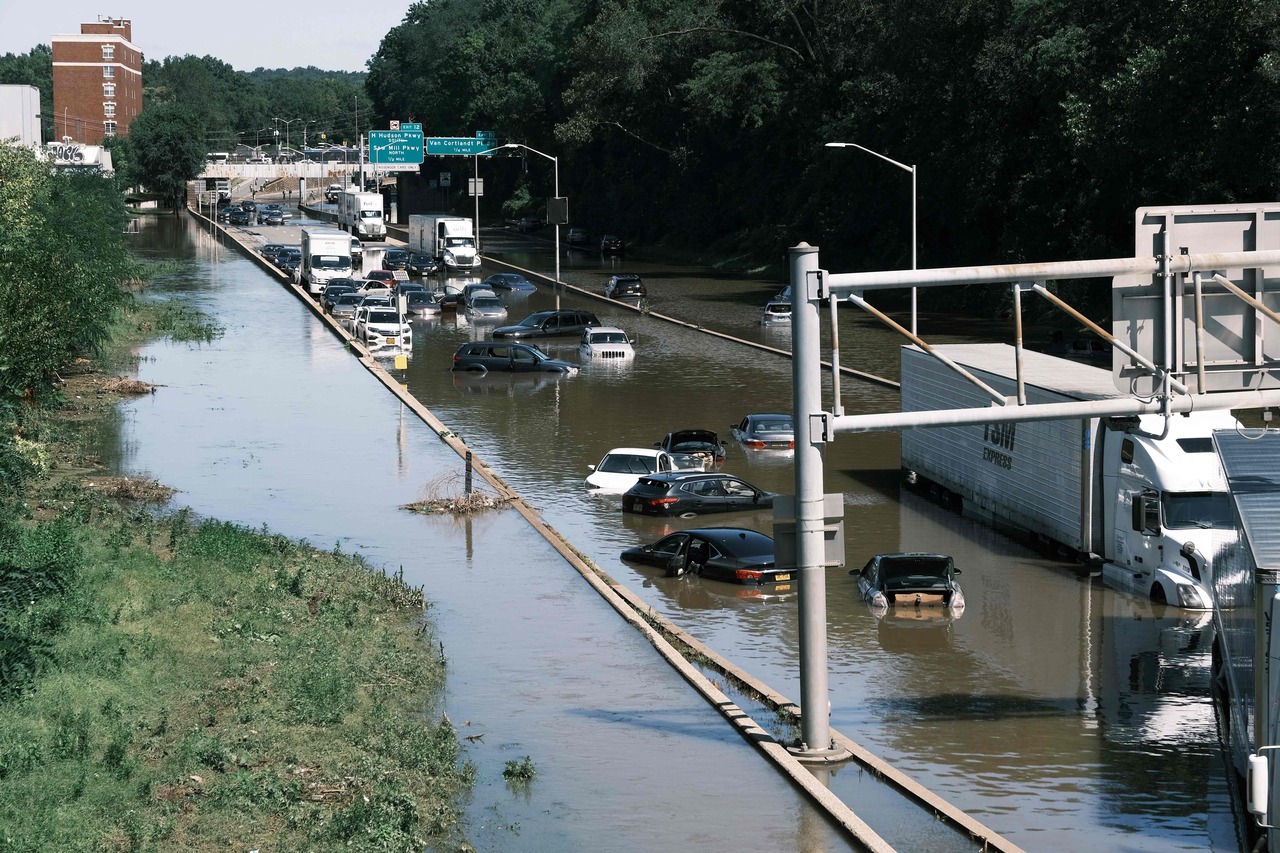Global losses from catastrophes reached $365b in 2021
Sign up now: Get ST's newsletters delivered to your inbox

Global economic losses from natural catastrophes reached US$270 billion (S$365 billion) in 2021.
PHOTO: AFP
Follow topic:
TEXAS (BLOOMBERG) - Hurricane Ida and the freakish winter storm that froze Texas in February last year topped last year's list of most damaging storms, according to the annual report on insurance industry losses caused by natural catastrophes put out by reinsurance giant Swiss Re.
The report found that global economic losses from natural catastrophes such as floods, hurricanes and wildfires reached US$270 billion (S$365 billion) in 2021.
Of those losses, less than half, or US$111 billion, were actually insured. Still, that US$111 billion equalled the fourth-largest payout since the Swiss Re Institute, the insurer's research arm, began keeping records in 1970.
Insured losses have been on a long-term growth trend of 5 per cent to 7 per cent for a while, according to Swiss Re, and extreme events caused by climate change shoulder much of the blame.
In particular, the report noted, climate change is inflaming what it calls "secondary perils".
Historically, insurers worried about hurricanes and earthquakes as the only natural disasters that could cause monster damages.
Everything else, including heavy rains not associated with hurricanes and wildfires, got put into a secondary bucket. But thanks to climate change these events have become both deadly and more destructive.
"In 2021, two separate secondary perils events - winter storm Uri in the US and devastating floods in central-western Europe in July - each caused losses in excess of US$10 billion," the report stated.
Even Ida, which started as a Category 4 hurricane in Louisiana, did a great deal of property damage long after it had left the Gulf Coast and areas normally associated with hurricanes.
"While the levees holding in Louisiana was a bright spot in Ida, the experience in the north-east (US) showed that flooding can happen in less obvious areas and outside of flood zones," said Mr Mohit Pande, the head of property and underwriting in North America for Swiss Re.
Floods have remained the number-one peril. Losses from floods have been growing at a significantly faster pace than global gross domestic product, the report said. Flood risk is complex to monitor and, in general, the world is very underinsured for flood damage.
In the US, only one in six home owners buys flood insurance, and 95 per cent of residential insurance in the US is purchased through the federal government at subsidised rates.
Mr Erdem Karaca, head of Cat Perils America for Swiss Re, said the gulf between flood coverage and need provided a huge opportunity for the industry.
"Our flood modelling is mature, but not as mature as earthquake or hurricane" modelling, he said. But, he added, the models were constantly being improved by joint work between academia and the insurance industry.
Accurate understanding of growing risks is key to reviving private flood insurance in the US. "The market for private flood insurance can develop with these capabilities," Mr Karaca said.

